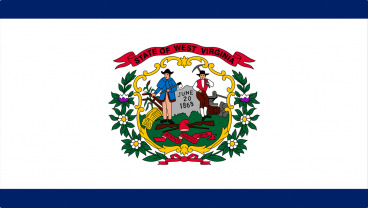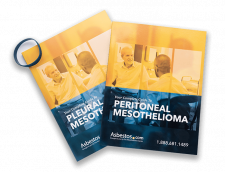Asbestos in West Virginia
West Virginia is home to naturally occurring asbestos deposits that residents should avoid. West Virginians who worked in construction, power generation, mining, coal refineries and manufacturing were at risk of asbestos exposure on the job.

Written by Michelle Whitmer • Edited By Walter Pacheco • Scientifically Reviewed By Arti Shukla, Ph.D.
Asbestos.com is the nation’s most trusted mesothelioma resource
The Mesothelioma Center at Asbestos.com has provided patients and their loved ones the most updated and reliable information on mesothelioma and asbestos exposure since 2006.
Our team of Patient Advocates includes a medical doctor, a registered nurse, health services administrators, veterans, VA-accredited Claims Agents, an oncology patient navigator and hospice care expert. Their combined expertise means we help any mesothelioma patient or loved one through every step of their cancer journey.
More than 30 contributors, including mesothelioma doctors, survivors, health care professionals and other experts, have peer-reviewed our website and written unique research-driven articles to ensure you get the highest-quality medical and health information.
About The Mesothelioma Center at Asbestos.com
- Assisting mesothelioma patients and their loved ones since 2006.
- Helps more than 50% of mesothelioma patients diagnosed annually in the U.S.
- A+ rating from the Better Business Bureau.
- 5-star reviewed mesothelioma and support organization.
Testimonials
My family has only the highest compliment for the assistance and support that we received from The Mesothelioma Center. This is a staff of compassionate and knowledgeable individuals who respect what your family is experiencing and who go the extra mile to make an unfortunate diagnosis less stressful. Information and assistance were provided by The Mesothelioma Center at no cost to our family.LashawnMesothelioma patient’s daughter
How to Cite Asbestos.com’s Article
APA
Whitmer, M. (2023, October 3). Asbestos in West Virginia. Asbestos.com. Retrieved April 11, 2024, from https://www.asbestos.com/states/west-virginia/
MLA
Whitmer, Michelle. "Asbestos in West Virginia." Asbestos.com, 3 Oct 2023, https://www.asbestos.com/states/west-virginia/.
Chicago
Whitmer, Michelle. "Asbestos in West Virginia." Asbestos.com. Last modified October 3, 2023. https://www.asbestos.com/states/west-virginia/.
About West Virginia
West Virginia, located in the heart of the Appalachian range, is a rural state with abundant natural resources. Asbestos use in logging and coal mining exposed workers. All but two of the state’s 55 counties (Jefferson and Hardy) have coal deposits, with 117 coal seams in the state.
Kanawha County, Cabell County and Putnam County have had the highest incidences of asbestos deaths for decades. These counties were home to some of the state’s most prosperous coal mines.
Coal refineries, metalworking shops power plants exposed West Virginia residents. Asbestos insulated the high-heat machinery at these facilities.
Asbestos exposure is the primary cause of mesothelioma, lung cancer and asbestosis.
In 2021, individuals who recovered from substance abuse completed training on asbestos abatement. It was part of a state-sponsored program known as Hire West Virginia. The program also provided funding for the participants to get their inspector’s licenses. The initiative helps create jobs in areas like Logan, West Virginia, where many older buildings still contain asbestos.
Occupations and Environmental Areas at Risk in West Virginia
With 117 coal seams in West Virginia, the state’s most notable asbestos threat was its mining industry. Union Carbide owned many West Virginia mines. Many workers have sued the company in asbestos lawsuits.
Other mines include ACME Cabin Creek Consolidated Coal Co., West Virginia Southern Coal Co., and Putnam Coal Mines.
Miners, contractors and processing workers were all at risk of inhaling asbestos. Some coal mines in the northeast may contain asbestos. Crushing, grinding, or handling asbestos-containing coal put workers at risk of exposure.
Not all coal mines were home to asbestos, but mining equipment posed another threat. Brake linings, welding blankets, pipe insulation and transit panels from mines contained asbestos.
State power plants used asbestos-containing equipment to create a fine powder out of coal. Examples include Dominion Virginia Power, Allegheny Energy Supply and Monongahela Power Company.
Job Sites with Exposure:
- Appalachian Power Company
- Elkem Materials/Elkem Metals Inc.
- Gordon Gasket and Packing Company
- Norfolk Southern Railroad
- P&H MinePro Services Appalachia
- UB West Virginia, Inc.
- Vimasco Corporation
- Weirton Steel
- Wheeling Pittsburgh Steel
- West Virginia Electric Supply
- Tyco Healthcare Group
Weirton Steel, the state’s largest industrial employer, utilized asbestos as a thermal insulator. Asbestos on metalworking machinery exposed many employees. Norfolk Southern Railway used asbestos to build the trains and the railroad tracks. Norfolk Southern Railroad and Weirton Steel have been defendants in asbestos lawsuits.
In July 2011, contractors found asbestos under the floor tiles in Clay County’s Lizemore Elementary School. The 59-year-old school received an inspection in the 1980s. Workers covered over asbestos rather than remove it. The school paid Dan Hill Construction approximately $9,000 to remove the 1,782 square feet of contaminated tile.

Regulations
The Radiation, Toxics and Indoor Air Division regulates projects that involve asbestos. This includes removal in homes or factories. They also oversee related safety plans in schools through the AHERA program.
Additional services conducted within their asbestos program include:
- Investigating reports of asbestos
- Inspecting and authorizing asbestos abatement projects
- Licensing future abatement workers
- Running public education and asbestos outreach programs
The laws in West Virginia specify that anyone who engineers, supervises or works on an official asbestos abatement project must possess specific licenses distributed by the government. The state’s revenue from licensing fees is then used for education and outreach purposes.







